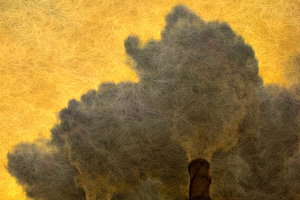Where did this story come from? What was your inspiration?
I once witnessed the female to male transition of a transgender person who was in a relationship with a woman. I didn’t get to know either person very well, but watching the transition from afar over the course of two years was one of the more remarkable experiences of my life. As a woman attracted to other women, I wondered what it might be like to date a transgender man during his transition. The story also grew out of questions I had at the time about the language of “natural” and “unnatural” as it is sometimes lifted from the Hebrew Bible and New Testament (I think problematically) and used to talk about gender and sexuality. Because the story is limited to the narrator’s perspective, however, it doesn’t go as far as it might into mining that vein.
Sigrid seems oblivious to how her change is affecting her lover. Why? Is Sigrid a selfish person, generally, or has this new thing just consumed her so, she can’t see anything else?
You are right that Sid is very consumed by the transition, though it’s hard to say whether this makes him especially selfish (I’m going to refer to Sid and use male pronouns rather than switching back and forth depending on where we are in the story). It’s not necessarily a bad thing to be able to articulate and pursue your desires, and to be fair, the narrator is doing everything she can to make Sid believe she’s happy with the situation in the name of being supportive. That said, the fact that Sid has not picked up on this tendency in the narrator before makes me think that he has been somewhat self-absorbed from the start.
I wonder about the relationship here. How long have they been together? How has it been until now?
The truth is, I don’t know much more about Sid or the narrator than what’s in the story. I would guess they haven’t been together for more than a year, and as with Sid’s self-absorption, I suspect that the narrator’s way of being in this relationship has been consistent from the beginning. The physical realities of Sid’s transition just make it harder for the narrator to pretend that this dynamic is sustainable for her. Ultimately, the reason the relationship is failing is not that Sid is a transgender man and the narrator is a lesbian but rather that they don’t know how to recognize and deal with a major conflict in their desires.
Why doesn’t the narrator have a name?
I couldn’t think of one that fit. Sigrid/Sid went through several names. The particular difficulty I had with naming the narrator is probably connected to the fact that she is, to an extent, an imagined incarnation of myself. While the story is not about my own experience, I found it much easier to imagine myself in the narrator’s position than in Sid’s. Apart from that, the namelessness seems to fit her character, as she has a hard time articulating an identity apart from Sid.
Tell us about your writing process. What is easy for you? What takes the most work?
I’m still learning about my own process. This story stewed in my head for about a year before I wrote a four-page first draft. After writing a first draft, I often spend months (sometimes years) revising, retyping new drafts from the beginning while I continue to start and work on other projects. I probably have about thirty slightly different versions of “Natural” that I wrote over two years. At the sentence-level, I have a similar process for writing stories as I do for writing songs on the guitar or piano — I have to hear it to know whether it sounds right. I often start a new draft by rereading the old one out loud, listening for missed beats and wrong notes. What’s harder for me is tackling larger structural issues, like the ordering of scenes. What makes the story finished often seems to be some dramatic, almost last-minute change that, once I make it, seems like the most obvious thing in the world.



 The core workshop of SmokeLong Fitness is all in writing, so you can take part from anywhere at anytime. We are excited about creating a supportive, consistent and structured environment for flash writers to work on their craft in a community. We are thrilled and proud to say that our workshop participants have won, placed, or been listed in every major flash competition. Community works.
The core workshop of SmokeLong Fitness is all in writing, so you can take part from anywhere at anytime. We are excited about creating a supportive, consistent and structured environment for flash writers to work on their craft in a community. We are thrilled and proud to say that our workshop participants have won, placed, or been listed in every major flash competition. Community works.